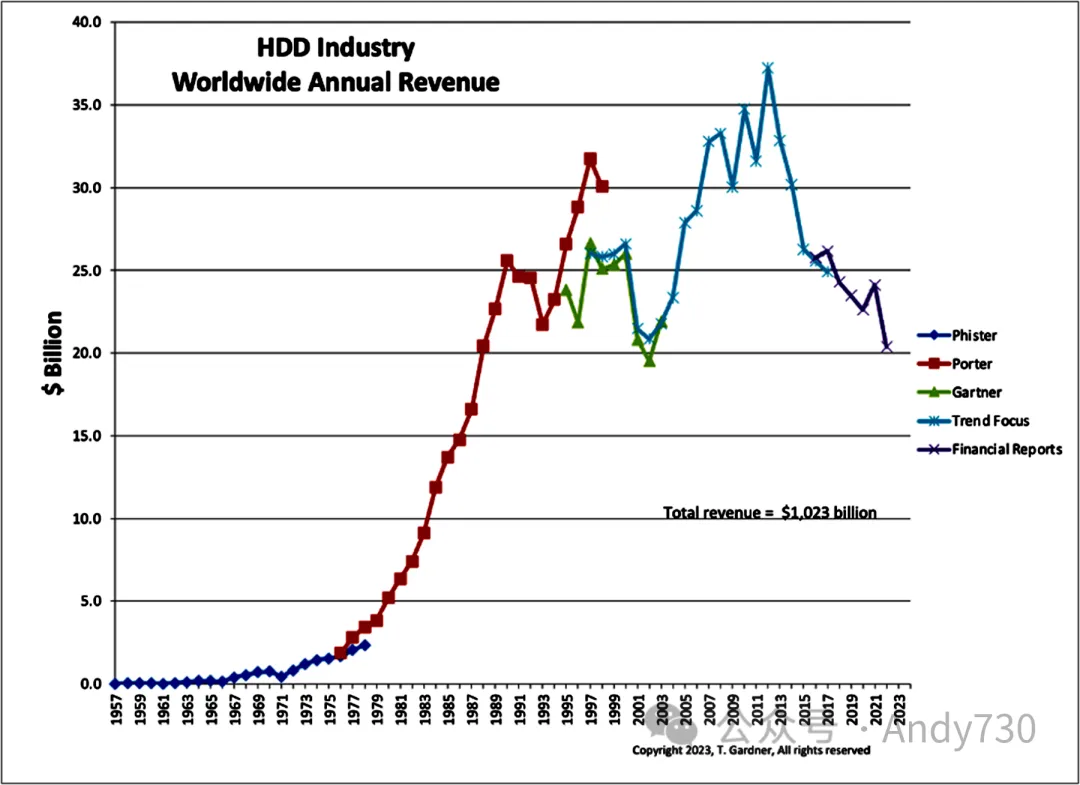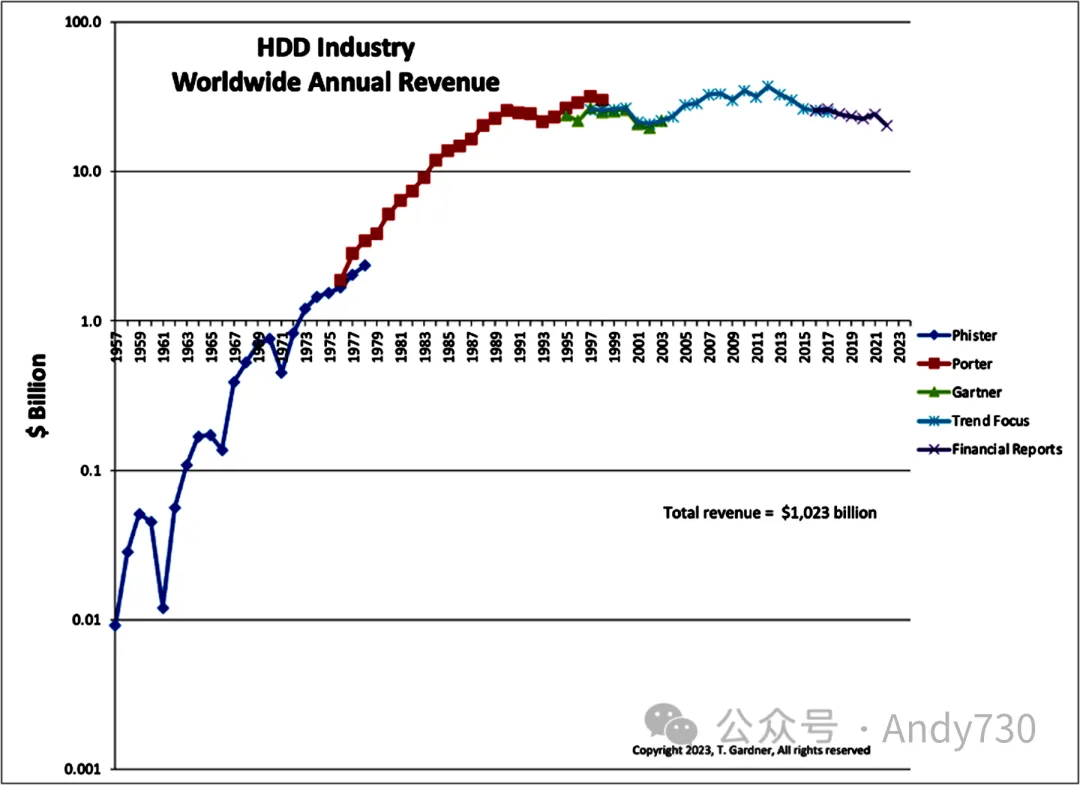Summary
Revenue and shipment
In 2012, the HDD industry revenue peaked US$37 billion, potentially influenced by the 2011 flood in Thailand.
In 2010, HDD shipments peaked at an all-time high of 651 million units.
Since 2014, the HDD industry has been in decline, with revenue fluctuating between US$20 billion and US$30 billion.
Trend and prediction
In 2022, the storage market was sluggish, with the HDD price rising due to increasing adoption of SSDs.
In 2023, the estimated shipment of HDDs was 127 million, the total revenue was less than US$14 billion, and the total storage capacity was about 900 EB
In 2024, the HDD market is expected to see increased demand with the growth in AI and storage needs. Additionally, the NAND flash storage and SSD markets are recovering.
---[Body]---
This article summarizes the revenue and shipment data of the HDD industry since IBM invented the digital HDD in 1956.
Over the 67-year history of HDDs, there are several people who have tracked the shipments and revenue of the industry. The first source of HDD industry revenue was Montgomery Phister, who's book on Data Processing Technology and Economics is the source of our earliest HDD revenue estimates from 1957 through 1978. Jim Porter, publisher of the Disk/Trend Reports, began tracking the HDD industry in 1976 until 1998.
Gartner, IDC TrendFocus, and Peripheral Research (and Coughlin Associates) also covered the HDD industry. We had some industry data from Gartner and TrendFocus from 1995 through 2017. Data from 2018 through 2022 was from quarterly reports from Seagate, Western Digital, and Toshiba (the remaining HDD companies since 2013).
The chart below shows all of these data sources together for HDD industry total revenue. We can see that there are some differences between the various sources for industry revenue over the years.


HDD Industry Annual Revenue from Several Sources (linear vertical scale)
The chart below plots the same data, but with a logarithmic vertical scale. From these two charts, we can see that the year of peak HDD revenue was in 2012, likely due to the shortage of HDDs that year due to the impact of the floods in Thailand in the Fall of the prior year. The peak year for HDD shipments was in 2010 when 651 million units were shipped.

HDD Industry Annual Revenue from Several Sources (logarithmic vertical scale)
From 1957 through 2022, 10 billion HDD units were shipped with total revenues over the same period of over US$1 trillion (US$1,000 billion). The peak revenue in 2012 was about US$37 billion and since 2014 the HDD industry total revenue has been between US$30 billion and US$20 billion generally trending downward.
At the same time, except for the storage recession through a good part of 2022 and all of 2023, HDD prices have been generally increasing as shipments for legacy enterprise, consumer, and computer applications have been displaced by SSDs and as high-capacity enterprise HDDs have grown in total HDD market share. In 2022, HDD total shipments were 172 million units and US$20.4 billion. We estimate that unit shipments in 2023 would total about 127 million units with total revenues less than US$14 billion. Total estimated HDD capacity shipments were a bit less than 900 Exabytes in 2023.
Our expectations are that increasing demand for storage for AI and other applications and reduced inventories of storage products from that pandemic at customers will drive demand for digital storage of all types in 2024. We are already seeing signs of a recovery in the NAND flash and SSD market going into 2024 and we expect that HDDs will also see increased demand in this year.
The HDD industry experienced revenue growth from its start in 1956 until a peak in 2012. Since that peak HDD revenues and unit shipments have declined. 2024 projections are for 127 million units shipped with industry revenues of less than US$14 billion and total storage capacity shipments of a bit less than 900 Exabytes.
-----Source: Tom Coughlin; Hard Disk Drive Revenue History From 1957 To Today; Jan 2, 2024


